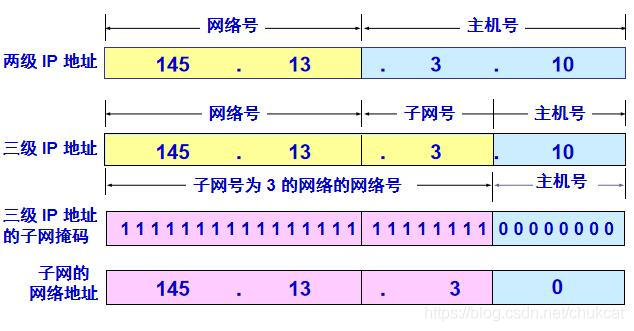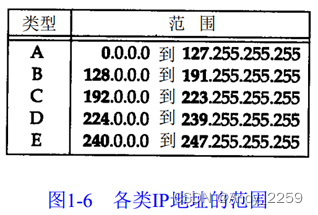Proof
- Proof By Simplification
- Proof By Rewriting
- Proof by Case Analysis
- destruct
- 例1
- 例2
- 多重析构
- 参考书目练习答案
- basic部分
这部分内容写了快两个星期了,期末考试越来越近,紧张紧张
Proof By Simplification
之前的代码中出现过
Proof. simpl. reflexivity. Qed.
simpl是将方程的两边简化,reflexivity使用自反性检查两边是否包含相同的值
例如:
Theorem plus_0_n:forall n:nat,0+n=n.
Proof.
intros n. simpl. reflexivity. Qed.
实际上自反性可以在检查两边式子的时候自动实现一些简化,我们可以省略simpl的过程(simpl相当于将中间过程展示了出来)
Theorem plus_O_n' : ∀n : nat, 0 + n = n.
Proof.intros n. reflexivity. Qed.
以上的证明过程使用了Theorem引出需要证明的结论(实际上和exmaple差不多)
intros n. simpl. reflexivity.
以上是一个tatics的例子,tatics后续会详细介绍,这里我们只需要知道intro n.是将forall一般化
Proof By Rewriting
Theorem plus_id:forall n m:nat,n=m->n+n=m+m.
上述定理描述只有在n=m时,后续的定理才成立,并且需要对m和n一般化,intro. 可以实现上述三个目标
由于n和m是任意数,我们不能用simpl直接简化,需要利用条件n=m,将所有的n用m替换,再证明式子,这个过程用rewrite实现(是不是很像命题逻辑中的替换和代入规则)
Theorem plus_id:forall n m:nat,n=m->n+n=m+m.
Proof.
intros n m.
intros H. (*将前提引入到证明环境中*)
rewrite->H.
reflexivity.
Qed.
rewrite->H.代表将前提从左到右重写,n->m说明将n全部用m代替,也可以写成rewrite<-H,表示n<-m将m全部替换为n

Proof by Case Analysis
然而在一些未知条件过多的证明中,仅仅使用上述策略无法实现证明
Theorem plus_1_neq_0_firsttry : ∀n : nat,(n + 1) =? 0 = false.
Proof.intros n.simpl. (* does nothing! *)
Abort.
原因是n+1=0无法再进行简化
那样我们就需要考虑所有n的情况,利用枚举法证明结论
destruct
我们提到了关于表示出n所有可能性的想法,coq中用destruct函数来实现列举可能的情况
例1
Theorem plus_1_neq_0 : ∀n : nat,eqb (n + 1) 0 = false.
Proof.intros n. destruct n as [| n']- reflexivity.- reflexivity. Qed.
ps:我没找到coq里面关于eqb函数的notation,这里直接用函数表示了
- destruct函数为我们生成两个子目标:n=O,n=S n’,我们需要分别证明其正确性
destruct n as [| n']表示对每种情况需要引入的变量名,在这个证明中coq不会自动分类,需要根据引入的变量名修改子目标,[ ]表示一个参数列表,参数之间用“|”分割- 我们使用“-”来使代码的分类证明更加有序
例2
我们也可以利用析构函数的策略证明相关的布尔表达式
Theorem negb_involutive:forall b:bool,negb (negb b)=b.
Proof.intros b.destruct b.
- reflexivity.
- reflexivity. Qed.
多重析构
有时我们需要对子目标继续进行析构,这时我们需要用不同的项目符号标记目标
Theorem andb_communtive:forall b c,(andb b c)=(andb c b).
(*定律描述*)
Proof.intros b c.destruct b.- destruct c.+ reflexivity.+ reflexivity.- destruct c.+ reflexivity.+ reflexivity.
Qed.遇到三重以上证明时,可以用*作为第三层析构
我们也可以用括号包含析构内容,使代码更清晰
Theorem andb_commutative' : ∀b c, andb b c = andb c b.
Proof.intros b c. destruct b eqn:Eb.{ destruct c eqn:Ec.{ reflexivity. }{ reflexivity. } }{ destruct c eqn:Ec.{ reflexivity. }{ reflexivity. } }
Qed.
参考书目练习答案
basic部分
- EX5:standard (plus_id_exercise)
Theorem plus_id_exercise : forall n m o : nat,n = m -> m = o -> n + m = m + o.
Proof.
intros n m o.
intros H1 H2.
rewrite->H1.
rewrite<-H2.reflexivity. Qed.
Theorem mult_0_plus : forall n m : nat,(0 + n) * m = n * m.
Proof.intros n m.rewrite -> plus_O_n.reflexivity. Qed.
//其中第二个证明展示了用已知结论重写待证明的式子
- EX6:standard (mult_S_1)
Theorem mult_S_1 : forall n m : nat,m = S n -> m * (1 + n) = m * m.
Proof.
intros n m.
intros H.
rewrite->H.
reflexivity.
Qed.
注意这里不能用<-,因为无法找到需要被代替的S n
- EX7:standard (andb_true_elim2)
Theorem andb_true_elim2 : forall b c : bool,andb b c = true -> c = true.
Proof.intros b c.destruct b.-destruct c.+ simpl.intros H.reflexivity.+ simpl.intros H.rewrite->H.reflexivity.-destruct c.+ simpl. intros H.reflexivity.+ simpl.intros H.rewrite->H.reflexivity.
Qed.有几步不太好想,关键是把明确什么时候引入前提,什么时候结论为真不需要证明,什么时候结论为假需要说明前提也为假(利用替换)
- EX8:standard (zero_nbeq_plus_1)
Fixpoint eqb (n m:nat):bool:=
match n with
|O=>match m with |O=>true|S m'=>falseend
|S n'=>match m with|O=>false|S m'=>(eqb n' m')end
end.Theorem zero_nbeq_plus_1 : forall n : nat,eqb 0 (n + 1) = false.
Proof.intros n.destruct n as [|n'].- reflexivity.- reflexivity.
Qed.
- More exercise答案
1 indentity_fn_applied_twice
Theorem identity_fn_applied_twice :forall(f : bool -> bool),(forall(x : bool), f x = x) ->forall(b : bool), f (f b) = b.
Proof.intros f.destruct b.(*如果不将x进行析构和引入,x代表任意数,可以直接代换*)- rewrite H. rewrite H. reflexivity.- rewrite H. rewrite H. reflexivity. Qed.2 (negation_fn_applied_twice)
Theorem negation_fn_applied_twice:
forall (f: bool->bool),(forall x:bool,f x=negb x)->forall b,f(f b)=b.
Proof.intros f.destruct b.- rewrite H. rewrite H. reflexivity. - rewrite H. rewrite H. reflexivity.
Qed.
3 andb_eq_orb
Theorem andb_eq_orb :forall (b c : bool),(andb b c = orb b c) ->b = c.
Proof.intros b.destruct b.-simpl. intros c. intros H. rewrite->H. reflexivity.-simpl. intros c. intros H. rewrite->H. reflexivity.
Qed.
这里没有选择将可能的结果全部析构,而是析构一个变量后直接将式子化简(不要小看simpl的化简能力)



















